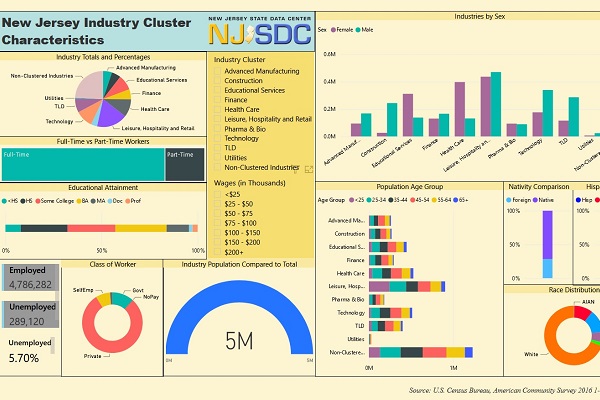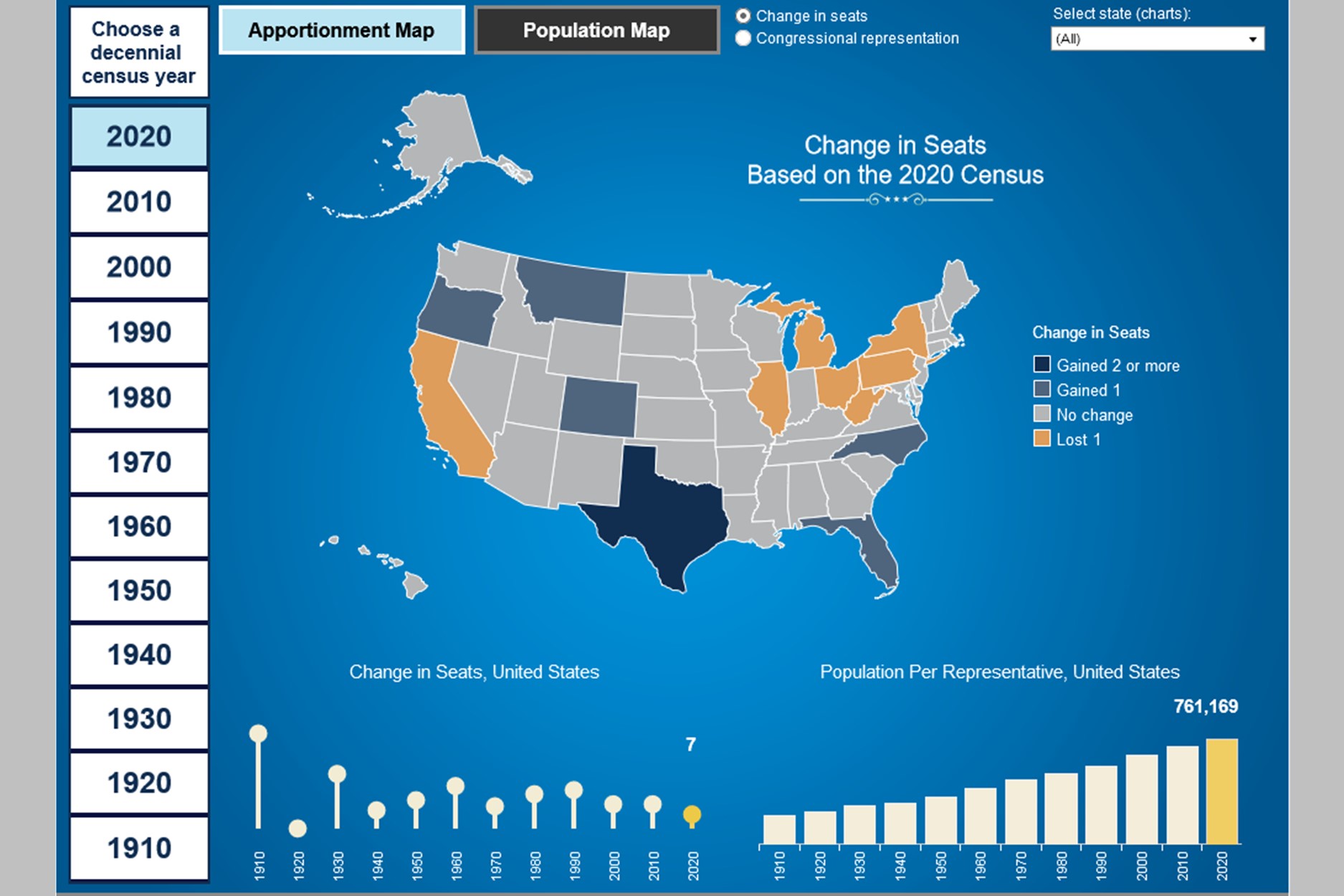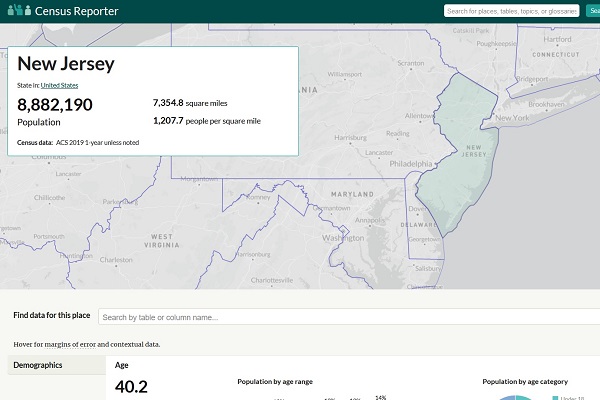2014 State, Metropolitan Area and County Personal Income

The US Bureau of Economic Analysis (BEA) recently released 2014 estimates of state, metropolitan area and county total and per capita personal income. Estimates for 2010 to 2014 per capita income reflect state and county population estimates available as of March 2015.
Total personal income is the sum of all income received by all persons from all sources. Personal income includes the sum of net earnings by place of residence, rental income of persons, personal dividend income, personal interest income and personal current transfer payments. Transfer payments include income from sources such as Social Security, pensions and public assistance. Personal income is measured before the deduction of personal income taxes and other personal taxes and is reported in current dollars (no adjustment for price changes).
Total personal income in the nation increased by 4.4 percent in 2014 as growth accelerated from 2013 when personal income rose by 1.1 percent. In 2012, personal income went up by 5.0 percent. This year’s increase was largely the result of gains in private-sector wages and proprietor’s income. Income from wages, proprietor's income, rental income, transfer payments as well as interest and dividends increased at a faster rate in 2014 than in 2013.

In 2014, total personal income increased in all 50 states, however the rate of expansion was not uniform. In 24 states, total personal income increased at a faster rate than the nation, while in 26 states growth was below the national rate (4.4%). The rates ranged from a high of 6.2 percent in Colorado to a low of 1.6 percent in Kansas. In New Jersey, total personal income increased by 4.7 percent.
The five states with the highest total personal income in 2014 were California, followed by Texas, New York, Florida, and Illinois. New Jersey ranked seventh among the states in total personal income.
Per capita personal income is calculated as the personal income of residents of a given area divided by the resident population of the area. In computing per capita personal income, BEA uses the Census Bureau’s annual midyear population estimates. Estimates for 2010-2014 reflect population estimates available as of March 2015.
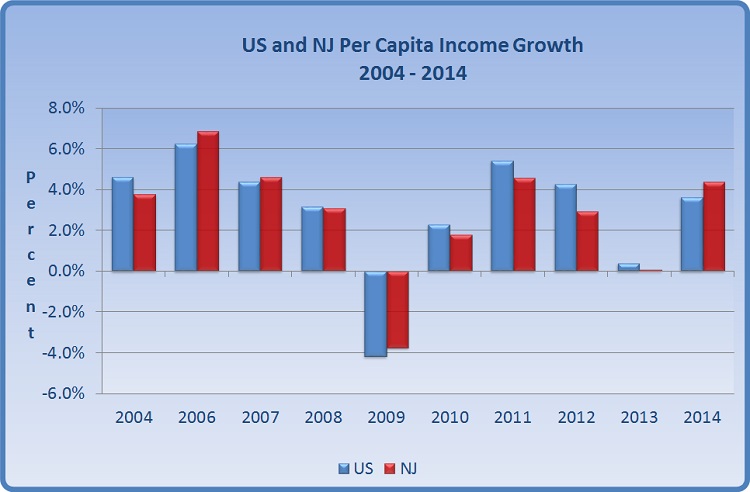
U.S. per capita personal income rose by 3.6 percent nationally in 2014. This marked the fifth consecutive year of expansion. In 2013, it rose by 0.4 percent. In 2012, the rate of increase was 4.3 percent. In 2011, it went up by 5.4 percent. In 2010 it grew by 2.3 percent. In 2009, which included part of the December 2007 - June 2009 recession, per capita personal income fell by 4.2 percent. According to estimates released by the BEA in September 2015, all 50 states recorded increases in 2014. These gains ranged for a high of 5.4 percent for Wyoming to a low of 1.1 percent for South Dakota. Less than half the states (22) performed better than the nation’s growth rate. Per capita income grew at a faster rate in 49 states in 2014 compared with 2013. Per capita income growth in Kansas was 1.3 percent in 2014, slightly less than it was in 2012 (1.3%). New Jersey’s per capita personal income growth rate rose from 0.1 percent in 2013 to 4.4 percent in 2014.

New Jersey ranked third in the nation with a total per capita personal income of $57,620, behind Connecticut ($64,864), and Massachusetts ($58,737). New Jersey’s per capita personal income was $11,571 (25.1%) higher than the nation ($46,049) and $3,871 (7.2%) greater than the Mideast region.
New Jersey had the highest per capita personal income among all states in the Mideast region. The Mideast region includes the neighboring states of Pennsylvania ($47,679), New York ($55,611), Delaware ($46,378) and Maryland ($54,176), as well as the District of Columbia ($69,838). The District of Columbia had a higher per capita personal income than any state in the nation. The Mideast region had the second-highest per capita income ($53,749) among the eight regions in the United States. Only New England ranked higher ($56,798).
In 2014, per capita personal income ranged from $64,864 in Connecticut to $34,431 in Mississippi. There were no changes in the composition of the top 10 states from 2013, other than position changes. Wyoming moved up from 7th to 6th and Maryland fell from 6th to 7th position.

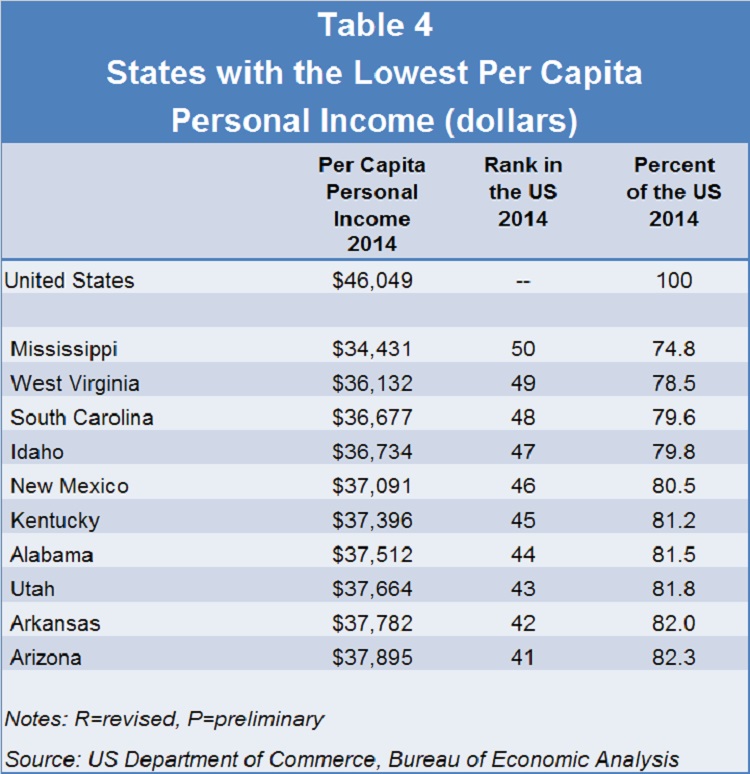
The bottom 10 states in 2014 were all ranked in the bottom ten last year. The Southeast region accounted for six of the ten states with the lowest per capita incomes; Arkansas, Alabama, Kentucky, South Carolina, West Virginia and Mississippi. The Rocky Mountain region accounted for two states (Utah and Idaho), and the Southwest region accounted for two states (Arizona and New Mexico).
Per capita personal income growth sped up in 2014 in most of the nation’s metropolitan statistical areas (MSAs). According to estimates, per capita income growth accelerated in 352 MSAs and decelerated in 24 others. Additionally, in one MSA, per capita income remained the same in 2014 as in 2013, while it declined in four others. Of these five MSAs, all experienced gains in 2013. On average, MSA per capita personal income grew 3.6 percent in 2014 compared with 0.4 percent in 2013. All metropolitan area that contained New Jersey counties saw their per capita income expand from 2013 levels. According to 2014 estimates, four of the seven metropolitan areas that included New Jersey counties had a higher 2014 per capita personal income than the metropolitan portion of the United States ($47,615).
The Bridgeport-Stamford-Norwalk, CT metropolitan area led the nation with a per capita personal income of $98,688 in 2014. One of the seven metropolitan areas that contain New Jersey counties was included in the top 10 metropolitan areas in the nation by per capita personal income. The New York, Newark-Jersey City, NY-NJ-PA metropolitan area ranked ninth ($61,440). This metropolitan area includes the New Jersey counties of Bergen, Essex, Hudson, Hunterdon, Middlesex, Monmouth, Morris, Ocean, Passaic, Somerset, Sussex and Union.

2014 Per Capita Personal Income: New Jersey Counties
Percent Change in Per Capita Income: New Jersey Counties 2013 to 2014
Overall, New Jersey had 16 of its 21 counties with a higher per capita personal income than the nation and seven of these exceeded the state average in 2014. Somerset County topped the state with a per capita personal income of $83,731, followed by Morris ($82,810), Hunterdon ($77,944), Bergen ($73,536) and rounding out the top five was Monmouth County with $66,019. Also, Somerset County ranked 22nd among the nation’s top 30 wealthiest counties. Morris County ranked 25th in the nation in 2014.
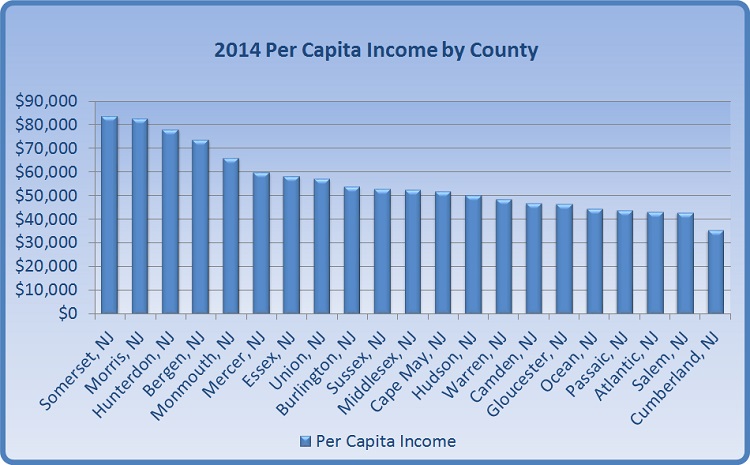
New Jersey also had three other counties ranked in the top 100 nationwide. Hunterdon ranked 33nd, Bergen ranked 47th, and Monmouth ranked 80th. Overall, New Jersey had 9 counties which ranked among the top 250 of the nation’s 3,113 counties.
Teton County, Wyoming led all the counties in the nation with a per capita personal income of $194,485 in 2014. New York County, New York was second with a per capita personal income of $148,002, and Wheeler County, Nebraska was third with a per capita personal income of $135,907. Williams County, North Dakota came in fourth with a per capita income of $121,538, and rounding out the top five positions was Pitkin County, Colorado with a per capita income of $112,796.
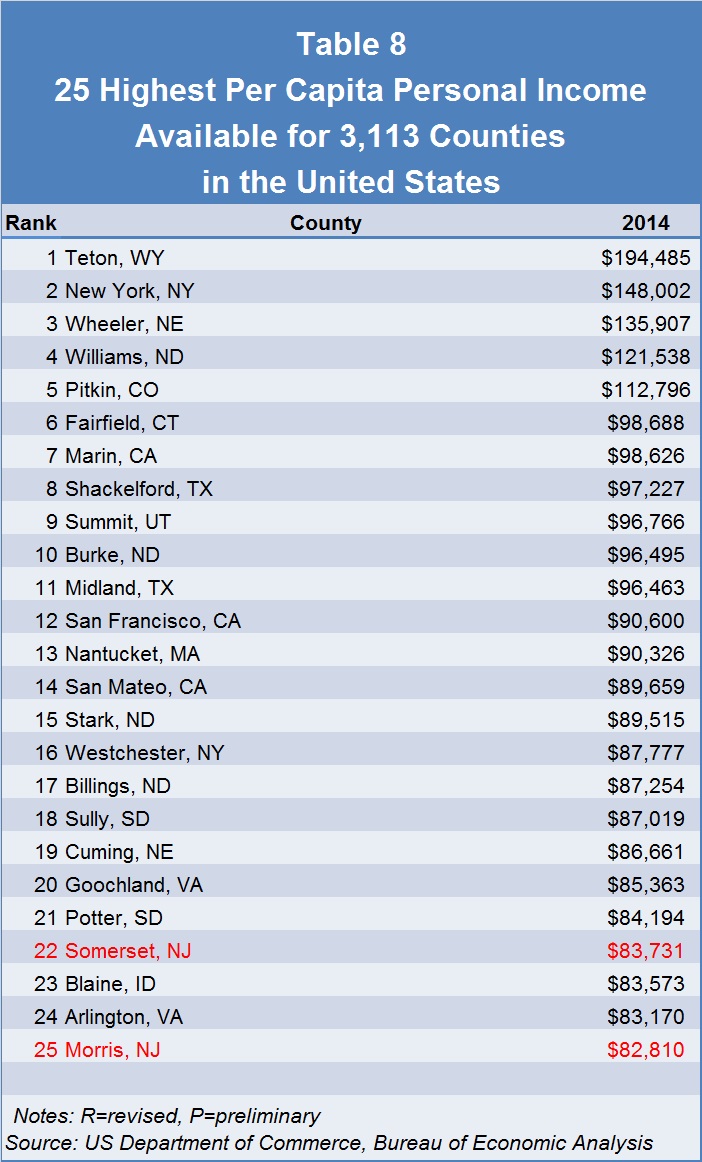
The Bureau of Economic Analysis (BEA) of the Department of Commerce publishes annual data on aggregate and per-capita personal income received by the population for State, metropolitan areas, and selected counties. Aggregate income estimates based on the income statistics shown in census products usually would be less than those shown in the BEA income series for several reasons. The Census Bureau data are obtained directly from households, whereas the BEA income series is estimated largely on the basis of data from administrative records of business and governmental sources. Moreover, the definitions of income are different. The BEA income series includes some items not included in the income data shown in census publications, such as income "in kind", income received by nonprofit institutions, the value of services of banks and other financial intermediaries rendered to persons without the assessment of specific charges, Medicare payments, and the income of persons who died or emigrated prior to April 1, 1990. On the other hand, the census income data include contributions for support received from persons not residing in the same household and employer contributions for social insurance.
 Official Site of The State of New Jersey
Official Site of The State of New Jersey